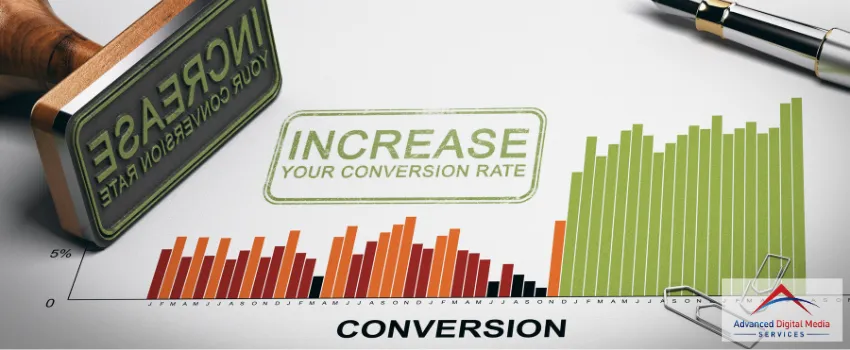In the current digital landscape, where the online marketplace is more crowded than ever, standing out becomes paramount for e-commerce businesses. E-commerce SEO, or Search Engine Optimization tailored for online stores, is the powerful tool behind the visibility of many successful digital retailers.
It’s more than just integrating keywords or ensuring a mobile-responsive design; it’s about crafting a seamless shopping experience that search engines recognize, and consumers trust.
As online shopping continues its meteoric rise, understanding the nuances of SEO for e-commerce is not just advantageous — it’s essential. This guide delves into why SEO matters in the bustling realm of e-commerce and offers actionable insights on harnessing its potential for business growth.
Why Is SEO Important in E-commerce Business?

SEO is a critical aspect of e-commerce business. Here are the key benefits of SEO that answer the question: “Why is SEO important for e-commerce?”
1. Organic Traffic and Visibility
Organic traffic and visibility are essential components of successful e-commerce SEO since they effectively increase website engagement. It is generated by potential customers when they search for related terms on major search engines to find relevant products or services.
Typically, this can be increased through a well-crafted SEO strategy. The strategy should include keyword optimization, content creation, link building, and technical optimization techniques, such as page speed optimization and structured data markup.
Furthermore, visibility is significant to rank high in search engine results pages (SERPs). Businesses can improve their SERPs presence through frequent content updates and other strategies like optimizing meta titles, leading to more organic traffic over time.
2. Increasing Conversion Rates

Increasing conversion rates is a valuable factor in optimizing the success of an e-commerce site. It can be achieved through effective website design, persuasive copywriting, and targeted marketing campaigns.
The website design should focus on providing an easy-to-navigate layout with concise information presented clearly. Copywriting should be engaging and encourage customers to take action while conveying trustworthiness. Targeted marketing campaigns can help reach potential customers who are likely to convert by targeting specific demographics or interests.
Additionally, businesses can benefit from A/B testing different elements of their website or ads to determine what resonates best with their target audience. Implementing these strategies properly will result in better conversion rates that drive more business for the e-commerce site.
3. Building Brand Credibility
Building brand credibility lets a business gain customer trust and loyalty. SEO strategies can help build that trust by ensuring that customers view the website as a reliable source of information. This includes providing accurate product descriptions, displaying user reviews, and creating content that reflects the company’s values.
Using keywords throughout the website can also increase search engine rankings, lending more legitimacy to the website in the eyes of potential customers. Furthermore, optimizing internal links and linking to other trusted sites can also build brand credibility online.
Lastly, staying active on social media channels, such as Twitter or Facebook, allows businesses to engage with their users and showcase their products or services in a fun way. It also provides quick responses to customer queries, thus furthering customer trust in the business.
4. Cost-Effective Marketing
Utilizing cost-effective marketing strategies maximizes the growth of an e-commerce business. E-commerce businesses have numerous cost-effective marketing tools, such as organic and paid SEO, content marketing, email campaigns, and social media advertising.
These strategies can be tailored to their target audience and adjusted based on performance data from analytics software. Using economical marketing methods, businesses can increase website traffic and sales conversions without spending much money.
Organic SEO is an excellent way for businesses to reach potential customers through organic search results. Through keyword research, content optimization, and link-building techniques, companies can improve their website’s visibility in search engine rankings without paying for ads or sponsored listings.
In addition, content marketing enables companies to create valuable information to share with potential customers through digital channels like blogs or social media networks. This will enable businesses to build customer relationships while increasing brand awareness on a budget.
Finally, email campaigns allow companies to send targeted messages directly into potential customers’ inboxes. The costs per contact are lower compared with more expensive traditional advertising methods, resulting in a more budget-friendly marketing approach.
5. Staying Ahead of Competitors
Staying ahead of competitors is critical for success in the e-commerce industry and requires effective strategies to guarantee competitive advantage. SEO tactics can be used to optimize websites, products, and services so that businesses can rank higher on SERPs. This will make them more visible to potential customers searching for related products or services.
Moreover, utilizing keywords relevant to the business’s target audience and optimizing page titles and meta descriptions with these terms can help attract more traffic.
Other ways to stay ahead of competitors include participating in backlink exchanges with other websites to increase visibility and boost credibility. Finally, regularly monitoring competitors’ activities and staying updated with industry trends can also give businesses a competitive edge in the e-commerce market.
6. Enhancing User Experience
To stay ahead of competitors, businesses must ensure their websites provide an optimal user experience. Enhancing the user experience on an e-commerce website can positively affect SEO rankings and drive more traffic to the site. Search engines increasingly consider user experience when determining where pages should be ranked in search results.
Making sure that users can easily navigate a website, find content quickly, and purchase products without any hassles will improve the overall user experience. Page loading speed is also imperative since visitors may lose interest if webpages take too long. It is also important to include features such as product reviews and customer service options, which can help provide customers with additional information before purchasing.
By incorporating these strategies into their e-commerce sites, businesses can improve their websites’ usability while boosting search engine visibility. Taking measures like these will ensure customers have a positive experience when interacting with an online business. As a result, they will be more likely to return for repeat purchases.
How to Use SEO for E-Commerce?

SEO for e-commerce is a complex process that requires understanding keyword research, on-page SEO techniques, technical SEO, link building, and content marketing. This section will tackle these processes in detail.
1. Keyword Research
Accurately identifying relevant keywords is a fundamental step in e-commerce SEO, as it allows businesses to target their desired audience effectively. To achieve successful keyword research for SEO purposes, marketers must thoroughly understand the intent behind user queries and align them with an appropriate set of keywords.
This understanding can be attained by analyzing competitors’ search engine rankings and conducting keyword research surveys. Selecting the best-suited terms that accurately reflect the product or service’s purpose is also required.
On top of that, marketers should also consider long-tail keywords as they are more specific and can help drive more organic traffic to a website. In conclusion, finding the right keyword through rigorous research can improve visibility and attract potential customers to an e-commerce website.
2. On-Page SEO Techniques
Having explored keyword research as a critical component of e-commerce SEO, it is necessary to delve into the various techniques used for optimizing webpages. On-page SEO involves enhancing specific web pages to secure a higher ranking and attract more pertinent traffic from search engines.
This includes strategic placement of relevant keywords and phrases and creating content relevant to users’ queries. Also required are ensuring website structure and navigation are user-friendly and optimizing HTML code such as title tags, meta descriptions, internal links, and image alt tags.
The goal is to improve visibility by ensuring certain elements are present on each page. In addition, these techniques should be complemented with off-page SEO strategies such as link-building or guest blogging. An effective combination of on-page and off-page SEO can help businesses succeed in online markets.
3. Technical SEO
Optimizing website performance and architecture to ensure search engine crawlers can effectively index a webpage is a requirement in technical SEO. This includes increasing page loading speeds, providing efficient crawling processes, and ensuring the website structure is logical and easy to navigate.
Furthermore, it also involves eliminating any issues that may prevent crawlers from accessing or understanding content on the page. Optimizing metadata such as title tags, meta descriptions, image alt tags, and heading tags can all help improve a website’s visibility in search results.
Additionally, creating an XML sitemap that outlines all pages on a domain ensures maximum coverage by search engines. Lastly, regularly monitoring server logs will allow webmasters to identify any potential issues or errors bots encounter during their visits. Technical SEO should be implemented as part of any successful e-commerce SEO strategy for optimal rankings in organic search results.
4. Link Building for E-Commerce
Link building for e-commerce helps create a website network that directs traffic and potential customers to an organization’s website. It involves the creation of hyperlinks from one website to another, intending to increase visibility and reach across the web.
It also helps build authority, enabling search engines such as Google to identify websites with high-quality content and relevant ones for searchers. Moreover, link-building can help establish relationships between websites, allowing them to work together for mutual benefit. This type of strategic relationship can be a vital asset for any e-commerce business looking to expand its reach online.
5. Content Marketing for E-Commerce
Content marketing for e-commerce is a successful strategy for driving traffic to a website and increasing sales. It involves creating compelling content that speaks directly to the target audience, such as blog posts, videos, and podcasts.
This type of content can help establish credibility and trust with potential customers while providing valuable information about products or services related to the e-commerce business.
Content marketing also helps improve search engine rankings by assisting websites to gain backlinks from other reputable sources. By optimizing content for targeted keywords, companies can attract more organic searches, leading to higher conversion rates.
In addition, providing users with consistent content keeps them engaged and encourages them to return for more information in the future. Ultimately, effective content marketing strategies help businesses reach their desired outcomes by engaging potential customers through quality content that builds trust and loyalty.
6. User Experience and Engagement
Ensuring a positive user experience and engagement is key for e-commerce businesses to drive sales successfully. To achieve this, a well-thought-out website design should be considered. It should have features that are easy to navigate and tools that help visitors quickly search for products, filter options, or add items to a cart.
Providing shoppers with helpful customer support resources can also help them enjoy the shopping process and foster loyalty to the brand. Further, engaging content such as blog posts or videos can attract potential customers and create interest in the business’s offerings. Combining different approaches to provide an enjoyable shopping experience can increase sales and brand recognition for e-commerce businesses.
7. Monitoring and Analytics

Monitoring and analyzing customer interactions with the e-commerce website optimizes user experience and drives sales. Through monitoring user behavior, businesses can identify areas where customers struggle to navigate the site or access desired content.
Analyzing this data helps website owners understand what changes need to be made to improve usability and customer satisfaction. With accurate analytics, businesses can tailor their marketing strategies to target key demographics and increase sales conversions.
Also, tracking website performance metrics, such as bounce rates and click-through rates, can help businesses gain insights into their campaigns’ effectiveness. By understanding which campaign elements resonate best with customers, they can focus on these areas to maximize success.
Overall, proper monitoring and analytics provide invaluable information that allows businesses to make informed decisions, resulting in increased ROI from e-commerce sites.
Key Takeaway
E-commerce SEO stands as a cornerstone in the digital retail landscape. In a world where consumers increasingly rely on search engines to guide their shopping journeys, businesses must pay attention to the influence of effective SEO strategies. The benefits are multifaceted, from driving organic traffic and increasing conversion rates to establishing brand credibility.
As the e-commerce sector evolves, staying attuned to SEO best practices will enhance visibility and foster trust among potential customers. As you look to the future, it’s evident that those who prioritize and master the intricacies of e-commerce SEO will be better positioned to lead and innovate.
Elevate your e-commerce game and harness the power of SEO with Advanced Digital Media Services.
Ensuring that your store stands out is a nonnegotiable to thrive in today’s cutthroat market. With the right SEO strategy, you can transform casual browsers into loyal customers and climb the search rankings.
Dive deep into the tailored solutions and expertise you need with our SEO e-commerce services in Weston, FL. Don’t just be another online store; become the go-to destination for your niche with Advanced Digital Media Services.





